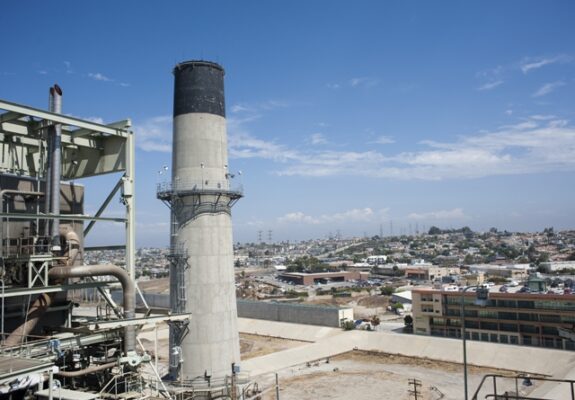On Local Government: A Tale of Two Cities (Redondo Beach, north and south)

The AES Power Plant in Redondo Beach. Photo
Every election tells a tale. Last week’s in Redondo Beach was no different.
Probably the most contentious issue on the ballot was the measure to change the zoning around the AES power plant and, it was contended, force AES to ultimately remove its visual blight from the City.
As some of you may know, Redondo is divided into five Councilmanic districts numbered from south to north. The plant is located in District 2. It is also adjacent and clearly visible from parts of District 3.
The results of the election were indicative of the lack of social integration within the City. In the three precincts most affected by the plant, the vote to rezone was 2360 voting Yes and 1755 voting No. In the rest of the City, it was 3118 voting Yes and 4106 voting No. Clearly, the City is of two minds.
This is nothing new to those who have lived with the odd makeup of the City. Shaped sort of like an hourglass tipped on edge, the two parts of the City have many distinct differences. For those of us in the north, we feel more a part of the other beach cities, Hermosa and Manhattan, than we do of the southern part of Redondo.
Partially that has to do with the general life patterns, such as shopping, playing, etc. For those in North Redondo, we go due west to the beach rather than south. The Redondo Pier is a destination, not a neighborhood attraction. And the rest of South Redondo has little relevance since it is much harder to get to than, say, Torrance or even Palos Verdes.
To many in the South, for example, The Galleria is much less an accessible alternative for shopping than, say, Del Amo. Artesia Boulevard has little or no attraction, particularly with RivieraVillage much closer.
It might as well be two cities.
And, at one time, there was a desire expressed by some in the north to legally separate. But, when the South figured out that the North actually delivered substantial sales tax revenue (The Galleria) and growing property tax rolls, the notion died. But the psychic differences remain.
Over the past few years, although kicking and screaming, some North-oriented amenities, such as a new library branch and a police substation on Artesia…along with the relocation of the Parks and Recreation Department to the former Cotton Shop site…has made the Northerners feel more included. But, it doesn’t change the patterns of our lives, which still is exclusive of the South.
Elections are snapshots of civic feelings. The vote on Measure A should be viewed as a call to do some rethinking of the North-South relationship. It is long past due.
As an aside, with the growth of voting by mail, it is often thought that elections are “over” before the polls actually open. In this election, that was clearly not true. The Measure A proponents won the vote by mail by 21 votes, but lost at the polls by 404. Conventional wisdom isn’t always correct.


